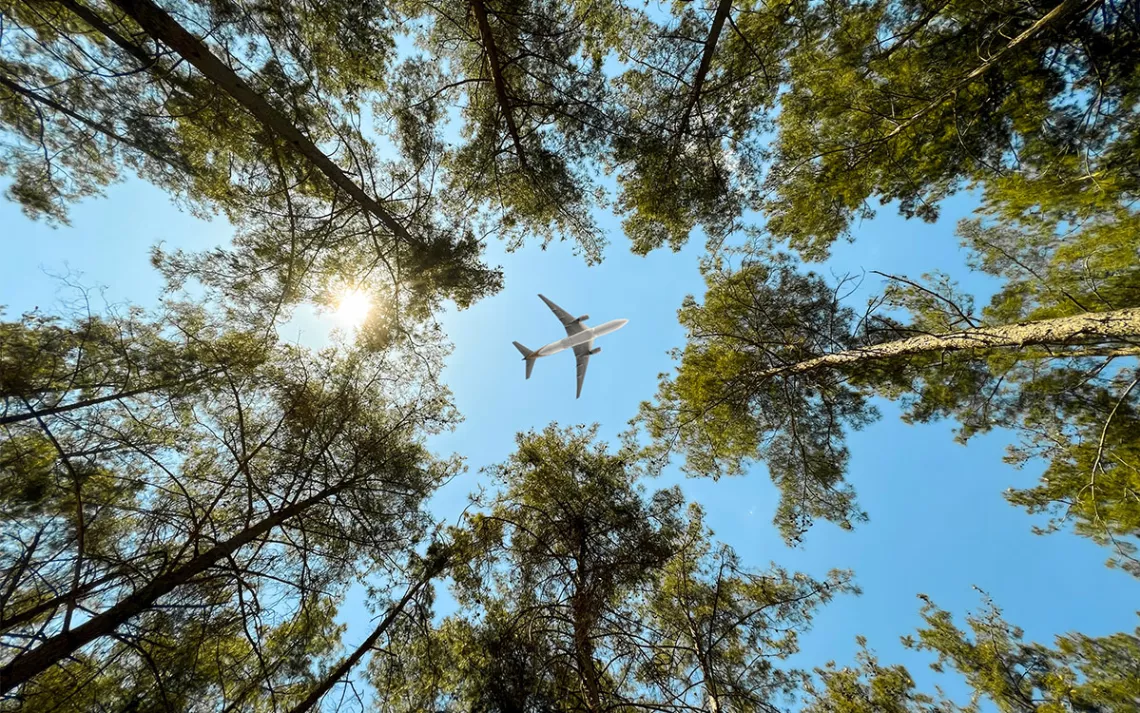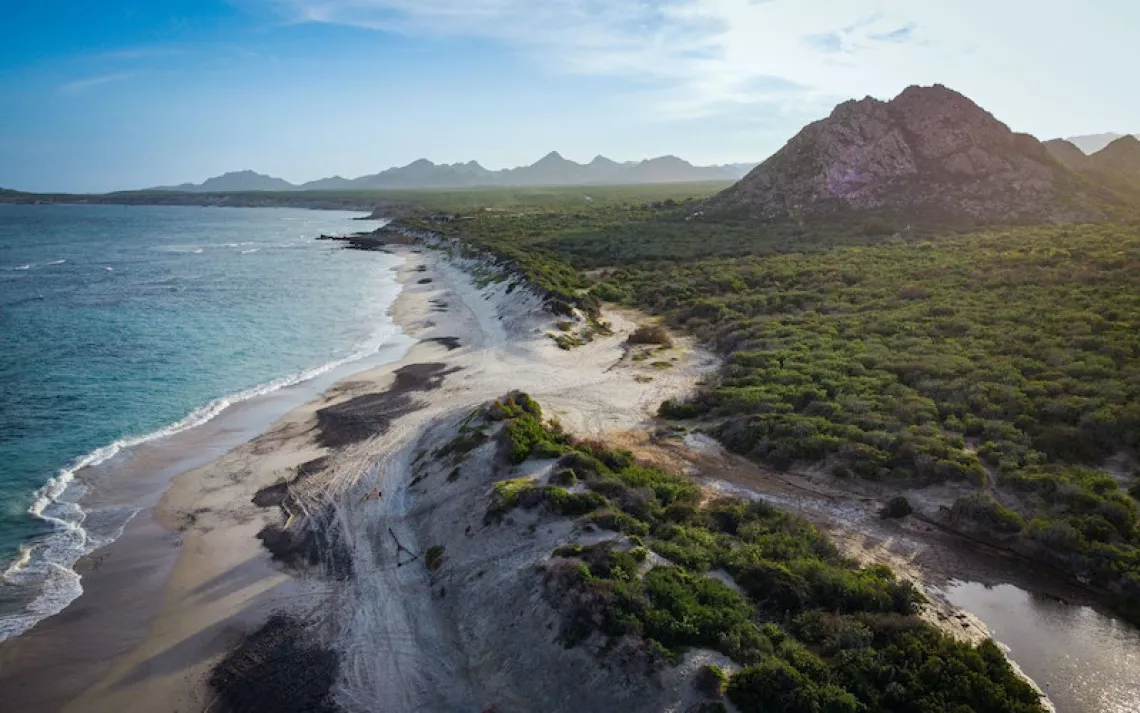Do Carbon Offsets Really Work?
Offsets are trickier than just paying for new trees to be planted after taking a flight

Photo by yalcinsonat1/iStock
For many eco-minded travelers, it’s a no-brainer to check the “offset my flight” button while purchasing an airline ticket. Nearly every airline offers such a program, along with a calculator showing how a passenger can offset their flight. In the midst of heat waves and massive floods, why not spend a few extra dollars to do your part in helping reduce greenhouse gas emissions?
Many of these carbon offset programs, however, aren’t what they seem. According to one recent study published in Science, offsetting projects have not reduced deforestation, and the projects that have seen some reduction are not as effective as they claim to be. Julia Jones, a professor of conservation science at Bangor University, says these results are not good news, as saving carbon-sequestering forests is crucial to keeping warming under 2°C, or 3.6°F.
“It’s a really concerning finding that these projects have been less effective than had been claimed,” she said. “Now, that doesn’t mean that they weren’t an effective tool, that these projects weren’t achieving anything. What it means is more carbon credits were being sold than they were delivering.”
Carbon offsets are a bit more complicated than just spending a few more dollars for a flight and then assuming your money is helping to conserve trees in the Amazon. Determining the amount of carbon you’ve personally emitted and figuring out the equivalent amount of offsets needed to potentially counteract those emissions is a tricky accounting process that might not even be accurate most of the time. And, there’s a chance the offset you bought to preserve trees in a forest went somewhere where those trees would have been preserved anyway, so your offset isn’t really doing much to take the carbon you emitted into the atmosphere.
Offsets are sold on the “carbon market,” which is where developers set a price for the actions they’re taking to reduce greenhouse gas emissions based on how much carbon they’re purportedly drawing out of the atmosphere. For example, a project in the Amazon rainforest could be based on conserving a particular area of rainforest and preventing deforestation, theoretically reducing emissions below what they would have been without this action. The project goes to a certifier, like Verra, which sets standards for these projects and determines how many tons of carbon the project has offset by taking these actions. Companies and consumers can then purchase these offsets to keep funding projects like these and theoretically help mitigate their impact on the environment.
According to Jones, the study used some of the best available methods for tracking deforestation in places where these projects are located. She says this kind of work is inherently trying to “know the unknowable,” but that this research is the best estimate of whether these projects have been successful or not.
“Their results are pretty unequivocal, I would say, to show that deforestation that’s been avoided at these projects is less than had been claimed by the projects,” Jones said. “And that’s really unfortunate.”
The carbon credits these projects have been offering are known as REDD credits, or reducing emissions from deforestation and degradation. They were developed as a way to incentivize countries to not cut down forests, so therefore require the buy-in from local communities as well as the consumers looking to offset their emissions. Erin Sills, a professor of forestry and environmental resources at North Carolina State University and a coauthor of the study, says that these two sides of the carbon credit issue illustrate the challenge carbon offset projects are facing.
“There’s the risk from those buying offsets that maybe we’re not getting a real offset … and then there’s the risk from the forest manager’s perspective that maybe they really do something and they don’t get credit,” she said. “We’re going to have to balance those two risks in order for REDD and forest carbon offsets to really have the impact we hope on the climate crisis.”
Sills also pointed out that in addition to increasing the integrity of these offsets, consumers and individuals purchasing carbon offsets also need to reduce emissions at the source to combat climate change, not just try to offset everything. She says they should be seen as a “last resort” option, not something you should immediately use to lower your carbon footprint. So, if taking a train rather than a plane for traveling is an option, that would be better than simply offsetting your flight through the airline. Some airlines, like United and Delta, have even transitioned away from carbon offsetting schemes after a number of studies questioned their effectiveness as substitutes for more robust actions airlines can take, such as reducing their emissions. Sustainable aviation fuel and better fuel efficiency can help reduce greenhouse gas emissions at the source rather than relying on methods that might reduce deforestation or plant trees to offset the carbon after it’s already been emitted.
“If we get away from this idea that the first thing we go to is offsetting our footprint … it might be easier to go to a mindset where we think more broadly about the whole range of benefits that we can generate through these REDD projects,” Sills said. “And maybe make sure we’ve got the balance in there and are thinking about projects that benefit local people and biodiversity and are going to help us all survive in this new world of climate change that we’re facing.”
 The Magazine of The Sierra Club
The Magazine of The Sierra Club



